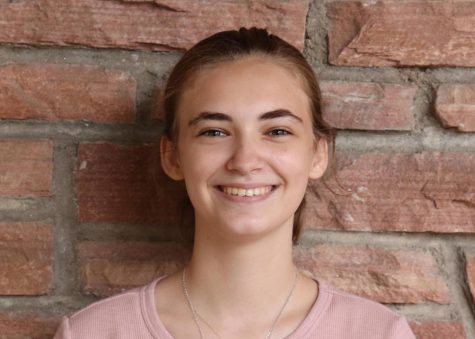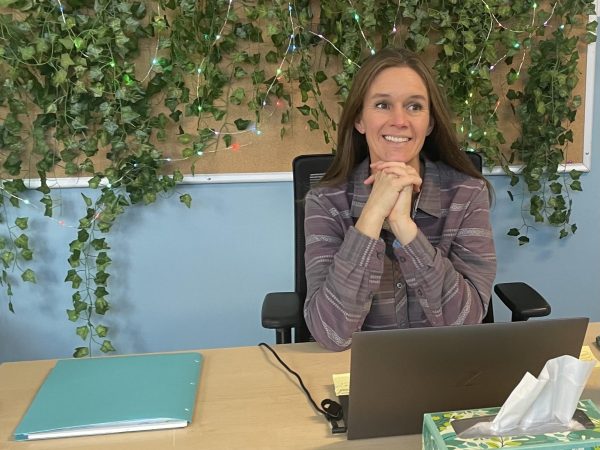Breaking the Algorithm
Teaching Computer Science in a Computerless Lab
Students sit on the floor, disappointed that they have no furniture. Luckily, Mrs. Zimmerman is a creative and flexible teacher.
If you are taking a computer science course you probably expected to walk into room 2246 on the first day of school to see new computers, tables and chairs. Unfortunately, 2246 was without tables and chairs for the first five days of school and still has no computers. Ms. Zimmerman, the new computer science teacher, doesn’t know when the computers will finally come.
As she put it, “We used to be able to order 30 desktop computers, and they would show up rather quickly. We got used to that instant gratification for technology. The supply chains were so disrupted by the pandemic, and that’s no longer true.” Online orders no longer arrive as fast as they used too and we see that firsthand with the computer lab.
So, at the start of the school year, Ms. Zimmerman found herself in a rather odd predicament: having to teach all of her computer science classes without computers. She adapted quickly and used “activities that teach computer programming concepts without an actual computer,” she said. One of these activities involved tape covering the floor to imitate a computer process known as parallel processing. Students had to go through the algorithm the same way a computer would. She has also been able to use a program put out by UC Berkeley compatible with Chromebooks and other devices. She hopes the program will act as a stepping stone into more complex coding systems. She says, “if you take a programming course where you’re just thrown into trying to program with text, you’ll be turned off because coding is difficult.” Text-based programming quickly leads to syntax errors and can be very frustrating. Block-based programming was developed to assuage these frustrations and make coding more accessible to all.
When the computer lab is finally completed, it will be equipped with thirty new Windows PCs, two monitors per computer, and Ethernet wired explicitly to the lab. Each computer will also have the Adobe design suite for the yearbook and The Owl staff to use. Computer science students can work on many projects, use the game development app Unity, and learn how to code with Python using the new computers. Ms. Zimmerman’s goal is to engage her students and make coding less intimidating. She is looking forward to having a completed computer lab, but for now, she’s “just trying to be flexible and smile under the mask.”

Annika is a senior at Boulder High this year. Though this is her first year with The Owl, she has long enjoyed writing and previously worked with other school publications. In her spare time, you can find Annika at the ice rink skating or hiking around Boulder. You may also find Annika watching Criminal Minds on Netflix, or cooking mac and cheese. If she had to choose a type of grape to go along with her mac and cheese, she would choose green grapes, although as a child she would have chosen purple grapes. After high school, Annika is planning on heading to college (no, she doesn’t know what she wants to study yet). Annika can’t wait to begin writing articles and is excited for the coming...







